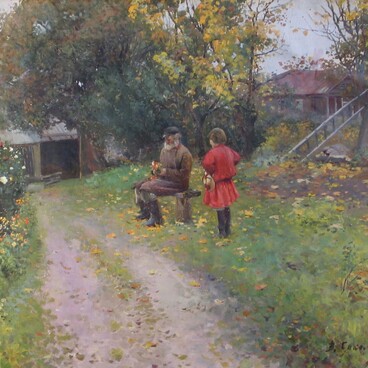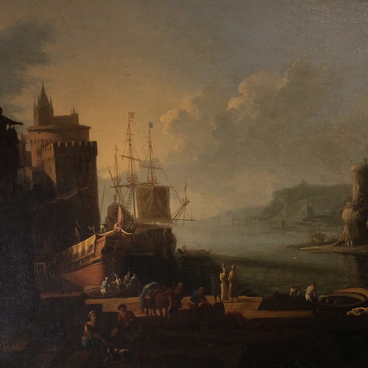Elizabeth Nikolayevna Shebeko, married name von Baumgarten, was the maid of honor of the last Empress Alexandra Feodorovna and one of the organizers of the First Women’s Art Club. This organization was founded in 1882 in St. Petersburg. It had a charitable orientation, and in fact was a meeting of bon ton ladies, who were united by an interest in art and a desire to do something good for others. Patrons belonging to the upper class, as well as artists, could become members of the Club.
In 1895-1896, the society consisted of 95 full-fledged members, 13 honorary members and two corresponding members. In 1884, a charter was signed, in which the purpose of creating a Club has been indicated: the artistic development of the country and assistance to artists in need. In addition to the 10 rubles contribution, which was paid annually, members were required to donate one item that was made with their own hands. Exhibitions were held, which, as a rule, were timed to Easter.
Initially, they were held in the palace of Grand Duke Nikolay Nikolayevich, and later in the halls of the Society for the Encouragement of Artists, as well as in the Passage. Members of the imperial family often attended such events. It was they who established a cash allowance for the needs of the Club (500 rubles from Nicholas II, 300 rubles from the Empress Alexandra Feodorovna). The exhibitions included not only canvases written by professionals, but also works by amateurs.
Elizabeth Shebenko herself was also an amateur. In the painting “By the Fountain” she depicted a corner of one of the Crimean parks. Despite the artist’s lack of professional art education, the work is done at a good level. The maid of honor was clearly familiar with the basics of linear perspective - she visually correctly builds an architectural detail with steps and a fountain in the middle of the composition. Shebenko also shows herself as a subtle colorist - the warm colors chosen by her convey the atmosphere of the southern park. The attention to detail, the extremely realistic depiction of each plant in the canvas suggests that, most likely, the maid of honor painted the picture from nature, in the open air.
In 1895-1896, the society consisted of 95 full-fledged members, 13 honorary members and two corresponding members. In 1884, a charter was signed, in which the purpose of creating a Club has been indicated: the artistic development of the country and assistance to artists in need. In addition to the 10 rubles contribution, which was paid annually, members were required to donate one item that was made with their own hands. Exhibitions were held, which, as a rule, were timed to Easter.
Initially, they were held in the palace of Grand Duke Nikolay Nikolayevich, and later in the halls of the Society for the Encouragement of Artists, as well as in the Passage. Members of the imperial family often attended such events. It was they who established a cash allowance for the needs of the Club (500 rubles from Nicholas II, 300 rubles from the Empress Alexandra Feodorovna). The exhibitions included not only canvases written by professionals, but also works by amateurs.
Elizabeth Shebenko herself was also an amateur. In the painting “By the Fountain” she depicted a corner of one of the Crimean parks. Despite the artist’s lack of professional art education, the work is done at a good level. The maid of honor was clearly familiar with the basics of linear perspective - she visually correctly builds an architectural detail with steps and a fountain in the middle of the composition. Shebenko also shows herself as a subtle colorist - the warm colors chosen by her convey the atmosphere of the southern park. The attention to detail, the extremely realistic depiction of each plant in the canvas suggests that, most likely, the maid of honor painted the picture from nature, in the open air.



